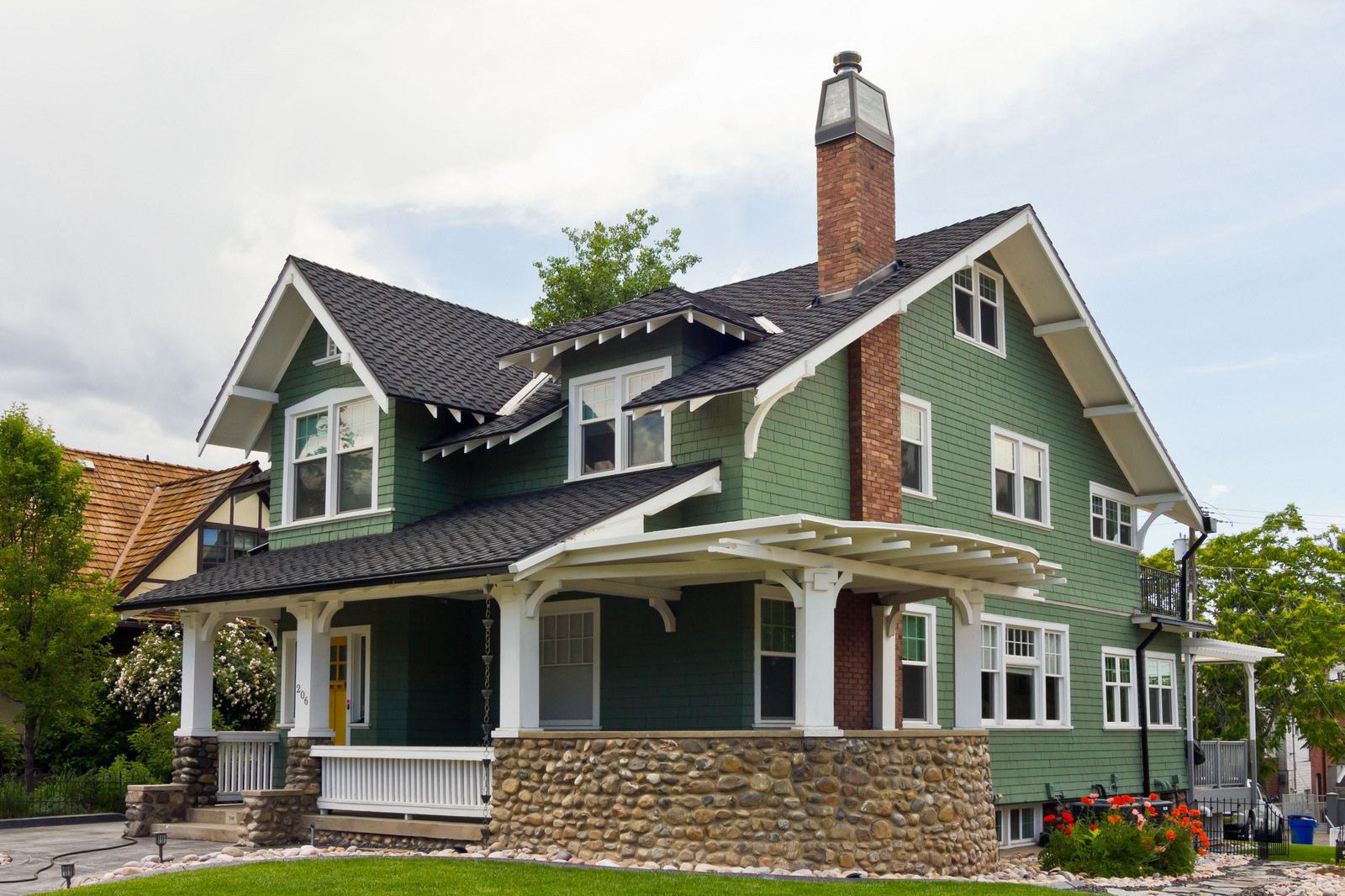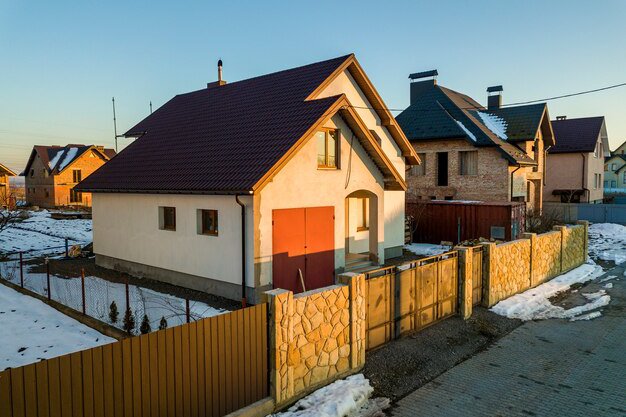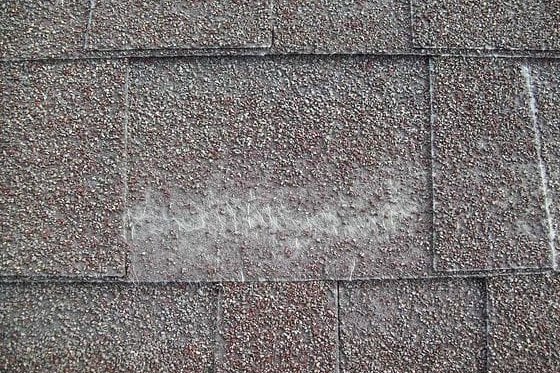Why Avoid 3-Tab Shingles for Your Scappoose, Oregon Home?
Choosing the right roofing material is one of the most significant decisions a homeowner can make. The roof is your home's primary defense against the elements, and its performance directly impacts the safety, comfort, and value of your property. For homeowners in Scappoose, Oregon, where weather can range from persistent rain and wind to occasional storms, selecting a durable and reliable roofing material is especially crucial. While 3-tab asphalt shingles have historically been a common and budget-friendly option, they come with significant drawbacks compared to modern alternatives like architectural shingles. Understanding these differences is key to making an informed decision that protects your investment for years to come.
Understanding Asphalt Shingle Types
Asphalt shingles are the most popular roofing material in North America, primarily due to their relative affordability and ease of installation. However, not all asphalt shingles are created equal. The two main types you'll encounter are 3-tab shingles and architectural (or dimensional) shingles.
3-Tab Shingles: These are the traditional, flat asphalt shingles. They are characterized by their distinct cutouts or "tabs" along the bottom edge, which makes each shingle appear as three separate pieces when installed (hence "3-tab"). They consist of a single layer of asphalt-coated felt or fiberglass mat, topped with ceramic granules. They offer a uniform, repetitive look on the roof.
Architectural Shingles: Also known as dimensional or laminate shingles, these are a more modern innovation. They are constructed with multiple layers of asphalt-coated mat that are laminated together. This creates a thicker, more dimensional look that mimics the appearance of natural wood shakes or slate tiles. The random patterns and varied textures provide a more aesthetically appealing finish.
The difference in construction – single-layer vs. multi-layer lamination – is fundamental and leads to significant differences in performance, durability, and lifespan.
The Compelling Case Against 3-Tab Shingles
While the lower upfront cost of 3-tab shingles might seem appealing, especially for budget-conscious projects, the long-term disadvantages often outweigh the initial savings. Here's a detailed look at why 3-tab shingles are generally not recommended for modern residential roofing:
Lack of Durability and Shorter Lifespan
One of the most significant drawbacks of 3-tab shingles is their limited durability and shorter lifespan compared to architectural shingles.
- Single-Layer Construction: Because they are made from a single, relatively thin layer of material, 3-tab shingles are less robust. They are more susceptible to wear and tear from environmental factors like UV radiation, temperature fluctuations (expansion and contraction), and physical impacts (hail, falling debris).
- Granule Loss: The protective ceramic granules embedded in the asphalt are crucial for blocking UV rays and providing fire resistance. 3-tab shingles tend to lose these granules more quickly than architectural shingles, especially on slopes facing direct sunlight or due to foot traffic and cleaning. Once granules are lost, the underlying asphalt is exposed, accelerating deterioration.
- Aging and Brittleness: As 3-tab shingles age, the asphalt can dry out and become brittle. This makes them prone to cracking, splitting, and breaking, particularly in colder temperatures or when walked on.
- Typical Lifespan: The average lifespan of a 3-tab shingle roof is generally 15 to 20 years, often less in harsh climates or with poor maintenance. Architectural shingles, in contrast, typically last 25 to 30 years or even longer, providing a significantly longer period of protection before needing replacement.
Choosing a material with a shorter lifespan means you will face the cost and disruption of roof replacement much sooner.
Inferior Wind Resistance
Wind damage is a leading cause of roof failures, and 3-tab shingles are notably less resistant to wind uplift than architectural shingles.
- Wind Ratings: Most standard 3-tab shingles are rated to withstand winds up to 60 miles per hour. Architectural shingles, due to their heavier weight and laminated structure, are typically rated for 110 mph or even 130 mph winds.
- Vulnerability to Uplift: The lightweight, single-layer design and the way 3-tab shingles are installed make them more vulnerable to wind uplift. Strong winds can get underneath the tabs, lifting and eventually detaching the shingles. Missing shingles expose the underlying roof deck to water, leading to leaks and potential structural damage.
- Storm Damage: In areas prone to strong gusts or storms, like parts of Oregon, a 3-tab roof is at a much higher risk of sustaining damage. Even if not immediately apparent, wind stress can weaken the shingle's seal and attachment, leading to problems down the line.
Severe weather can cause immediate roof damage. If your roof is leaking or you suspect storm damage, don't wait for a traditional inspection.
Book a roofing appointment to connect with local professionals who can assess urgent situations.
Limited Aesthetic Appeal and Curb Appeal
While aesthetics might seem secondary to function, the appearance of your roof significantly impacts your home's overall look and value.
- Flat, Monotonous Look: 3-tab shingles provide a flat, uniform appearance across the roof surface. While available in various colors, the repetitive pattern lacks depth and dimension.
- Mimicking Natural Materials: Architectural shingles are designed to replicate the richer, more varied look of premium roofing materials like wood shakes or natural slate. Their layered construction creates shadow lines and textures that add visual interest and architectural character to a home.
- Impact on Home Value: A roof is a large, visible part of your home. A roof covered with aging or basic 3-tab shingles can make a house look dated or less well-maintained, potentially negatively impacting its curb appeal and resale value compared to a home with modern architectural shingles.
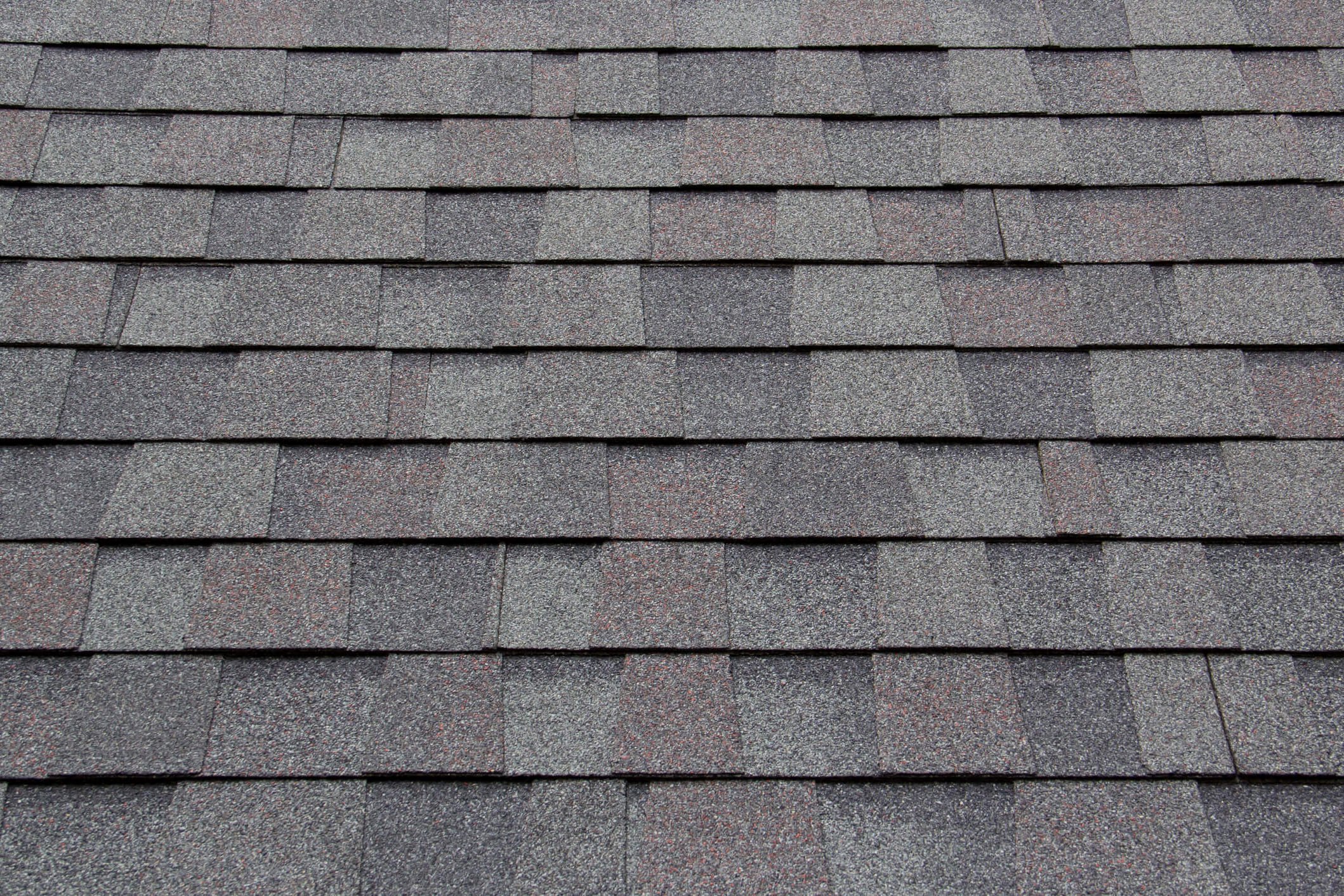
Architectural shingles offer a layered, dimensional look compared to flat 3-tab.
Weaker Warranties
The lower durability and shorter expected lifespan of 3-tab shingles are reflected in their warranties.
- Shorter Warranty Periods: 3-tab shingles typically come with shorter manufacturer warranties, often ranging from 20 to 25 years. Architectural shingles commonly offer 30-year or even lifetime limited transferable warranties.
- Prorated Coverage: Warranties on asphalt shingles are almost always prorated, meaning the manufacturer covers a decreasing percentage of the cost as the roof ages. With a shorter warranty period, the functional coverage on a 3-tab roof diminishes much faster.
- Wind Warranty Limitations: As mentioned earlier, the wind warranty for 3-tab shingles is significantly lower, meaning damage from even moderately strong winds may not be covered.
Investing in architectural shingles often provides peace of mind with a longer-lasting and more comprehensive warranty, offering better protection against defects and premature failure.
Illustrating the Issues: Signs of Aging 3-Tab Shingles
If your home currently has 3-tab shingles, especially if they are nearing or past their typical lifespan, you may start noticing signs of deterioration. These signs are often more pronounced and appear sooner than with architectural shingles.
- Curling or Cupping: The edges or corners of the shingles may start to curl upwards or the center may cup downwards. This indicates the shingle is drying out and losing its flexibility and seal, making it vulnerable to wind and water penetration.
- Cracking or Splitting: Brittle shingles can crack or split, creating direct pathways for water to reach the roof deck.
- Excessive Granule Loss: Finding large amounts of granules in your gutters or downspouts is a clear sign the shingles are losing their protective layer and are nearing the end of their life.
- Missing Shingles: Due to lower wind resistance and weakened seals, 3-tab shingles are more likely to be blown off the roof during wind events.
- Moss or Algae Growth: While moss can grow on any roof in damp climates like Scappoose, it can sometimes take hold more easily on older, worn 3-tab shingles with compromised surfaces. Moss retains moisture, which can further degrade the shingles and the underlying structure.
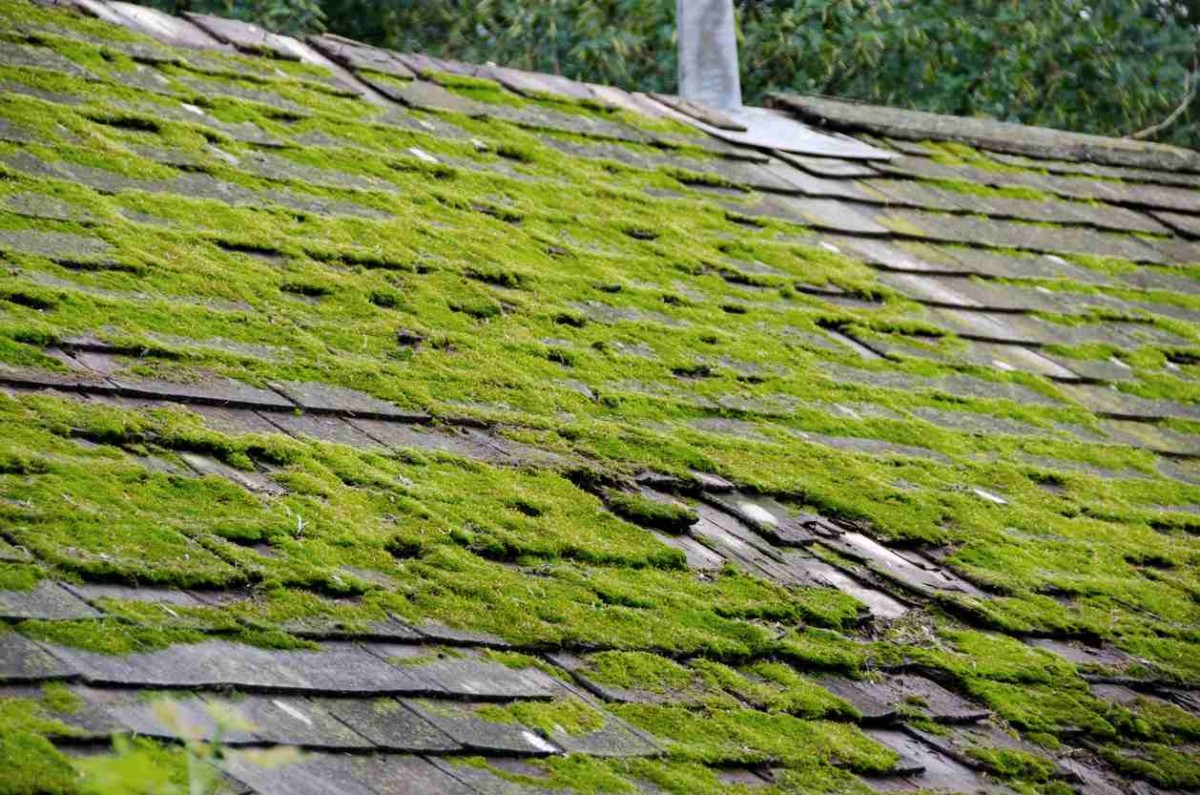
Moss growth is common in damp climates and can be a sign of an aging roof.
If you're seeing signs of wear like curling or missing shingles, it's time to evaluate your roof's condition.
Get your free instant roof estimate to understand potential replacement costs based on your home's specific roof measurements.
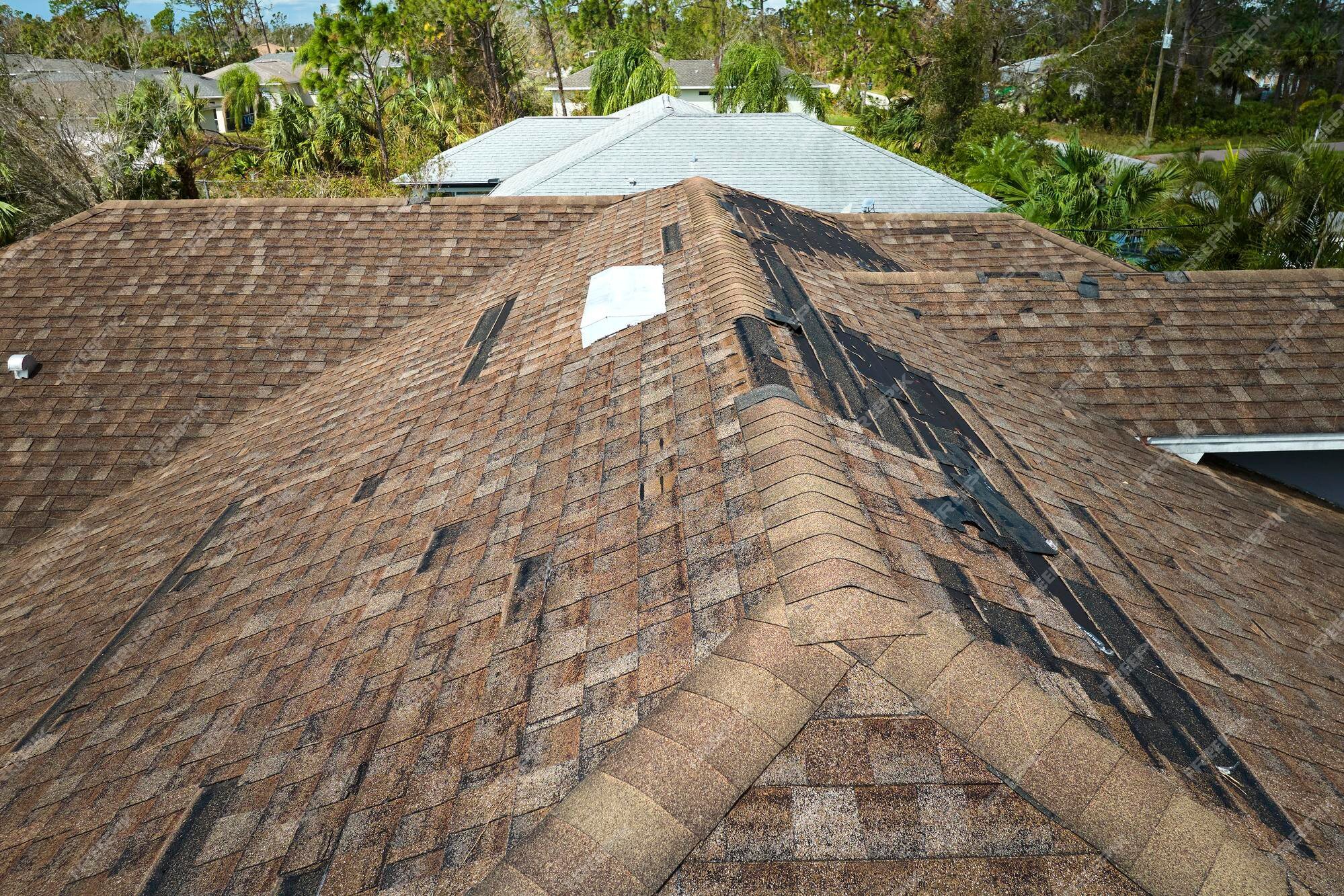
Missing shingles are a common sign of wind damage, which 3-tab shingles are more susceptible to.
Beyond the Shingle: The Full Roofing System Matters
It's important to remember that the shingles are just the outermost layer of a complete roofing system. The performance and longevity of your roof depend on all components working together effectively. A reputable roofer will always recommend replacing the entire system during a reroofing project, not just nailing new shingles over old ones or neglecting critical underlayers.
Key components of a modern roofing system include:
- Roof Decking: The structural base, usually plywood or OSB. Must be sound and free of rot or damage.
- Ice and Water Shield: A waterproof membrane installed along eaves, valleys, and around penetrations to provide extra protection against water intrusion from ice dams or wind-driven rain.
- Underlayment: A protective layer installed over the entire deck before shingles, acting as a secondary barrier against moisture if water gets past the shingles. Modern synthetic underlayments are more durable than traditional felt paper.
- Flashing: Metal or other material installed around chimneys, vents, skylights, and in valleys to direct water away from vulnerable areas.
- Ventilation: Proper attic ventilation (intake vents at the eaves and exhaust vents at or near the ridge) is crucial for regulating attic temperature and moisture. This prevents heat buildup that can prematurely age shingles and prevents moisture buildup that can lead to mold and rot.
- Drip Edge: Metal flashing installed along the eaves and rakes to direct water away from the fascia and into the gutters.
Choosing lower-quality 3-tab shingles might sometimes correlate with installers cutting corners on other system components to keep costs down. However, even if installed over a perfect system, the inherent limitations of 3-tab shingles will still result in a shorter lifespan and lower performance compared to architectural shingles installed on the same system.
Long-Term Cost Analysis: 3-Tab vs. Architectural
When evaluating roofing options, it's crucial to look beyond the initial purchase price and consider the total cost of ownership over the life of the roof.
- Initial Cost: 3-tab shingles have a lower per-square cost than architectural shingles. This is their primary advantage.
- Replacement Cycles: A 3-tab roof may need to be replaced every 15-20 years, while an architectural shingle roof can last 25-30 years or more. Over a 50-year period, you might replace a 3-tab roof 2-3 times, but an architectural roof only 1-2 times.
- Repair Costs: Due to lower wind resistance and durability, 3-tab roofs may require more frequent repairs for missing or damaged shingles, especially after storms.
- Potential Damage Costs: If a 3-tab roof fails prematurely or sustains significant storm damage, the cost extends beyond just shingles to potential repairs of the roof deck, underlying structure, insulation, and interior finishes due to water leaks.
- Energy Efficiency: While the shingle type itself has a minor impact on energy efficiency compared to insulation and ventilation, a failing roof system can contribute to energy loss. Properly installed architectural roofs with good ventilation contribute to a more stable attic environment.
- Resale Value: As mentioned, a newer roof with a durable material like architectural shingles is a strong selling point and can increase a home's marketability and perceived value.
When factoring in the cost of materials, labor for multiple replacements, potential repairs, and the impact on home value, the total cost of ownership for architectural shingles is often lower over the long term, despite the higher initial investment. It's an investment in longer-lasting protection and value.
When to Consider Replacing Your Roof
Recognizing the signs of a failing roof is critical to preventing costly damage to your home. If your roof is covered with 3-tab shingles and showing any of the following signs, it's likely time to start planning for a replacement:
- Significant granule loss
- Curling, cupping, or cracking shingles
- Missing shingles
- Dark streaks (algae) or significant moss growth that is difficult to remove
- Water stains on interior ceilings or walls
- Sagging roof deck
- Neighbors are getting their roofs replaced (shingles from the same batch installed around the same time often age similarly)
Ignoring these signs, especially with a less durable material like 3-tab shingles, can lead to leaks, rot, mold growth, and structural damage, turning a planned replacement into an emergency repair.
If you're planning a roof replacement or need to budget for future work, getting an accurate estimate is the first step.
Get your free instant roof estimate using our satellite technology and local data to get a quick, accurate quote.
Finding the Right Solution for Your Home
Deciding to replace your roof, especially moving from 3-tab to a more robust option like architectural shingles, is a significant undertaking. It requires careful planning, budgeting, and selecting a qualified professional.
Getting accurate information about the project scope and cost is essential. This is where modern tools can simplify the initial steps.
For non-urgent situations like planning for a replacement, budgeting, or comparing costs, get a fast, data-driven estimate.
Get your free instant roof estimate by simply entering your address. Our AI measures your roof and provides an estimate based on local pricing.
Once you have an idea of the scope and cost, or if you have immediate concerns like leaks or damage, connecting with a professional is the next crucial step.
If you have an active leak, storm damage, or need a professional assessment quickly, you need to book an appointment.
Book a roofing appointment directly with pre-vetted local roofers. Select your service and preferred day, and we'll schedule the appointment.
Choosing a reputable contractor who understands the specific challenges and building codes relevant to Scappoose and the surrounding area is vital for ensuring your new roof is installed correctly and provides the maximum possible lifespan and performance. They can help you select the best architectural shingle product for your home and budget and ensure the entire roofing system is installed to the highest standards.
Frequently Asked Questions
Q: Can I just replace the damaged 3-tab shingles instead of the whole roof?
A: For isolated damage on an otherwise healthy, relatively new roof, repair might be possible. However, if shingles are aging, brittle, or showing widespread signs of wear, replacing individual shingles is often a temporary fix, as adjacent shingles are likely in similar condition and will fail soon. A full replacement is usually the better long-term solution for aging 3-tab roofs.
Q: Is it possible to install new shingles over old 3-tab shingles?
A: While building codes in some areas might permit a single layer of new shingles over an existing layer, it is generally not recommended. This practice can hide underlying deck issues, compromise the new shingle's seal and wind resistance, add excessive weight to the structure, and void manufacturer warranties. A complete tear-off is the standard and recommended practice.
Q: How long does a roof replacement typically take?
A: The duration depends on the size and complexity of the roof, the weather, and the crew size. Most residential asphalt shingle roof replacements can be completed within one to three days once work begins.
Investing in Lasting Protection
Ultimately, deciding against 3-tab shingles in favor of architectural shingles is an investment in the long-term health, safety, and value of your home. While the initial cost is higher, the enhanced durability, superior wind resistance, longer lifespan, stronger warranty, and improved aesthetics provide significant benefits over the decades. For homeowners in Scappoose, Oregon, choosing a roofing material that can reliably withstand the local climate is paramount. By understanding the limitations of 3-tab shingles and exploring more robust options, you can ensure your home remains protected and beautiful for years to come.
